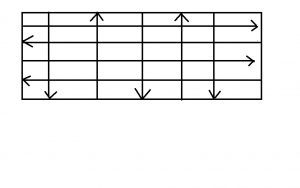
SEEDING A NEW LAWN or OVERSEEDING
1-Prepare
- Remove any debris (large clumps of dirt, stones, and etcetera), and spray hardy weeds with recommended herbicide
- When ground is moderately dry, rototill, and cultivate the soil, to a depth of 15-20cm (6″-8″)
- Add any necessary soil amendments as needed, such as peat moss, sand, or topsoil
- Rake well, and level the soil, creating a gradual slope away from the building, to prevent drainage problems. The soil should form small clods-a sort pebbly appearance
- NOTE: while leveling the soil, be sure to eliminate any low areas that could collect water, and any high areas that could be mowed too short
- Next, add TURF STARTER, along with dolomite lime. Work in well
2 – Apply
- Apply seed with a broadcast or drop-type spreader, sowing half the seed in one direction, and the other half at a right angle to the first. NOTE: Follow the instructions on the spreader to determine which setting to use.

- After seeding, rake lightly to incorporate seed into the top 0.5cm (1/4″) of soil. OR, apply a thin layer of soil, sand or peat. Lights roll the seedbed to ensure good contact between seed and soil
3-Water
- After seeding, soak the soil thoroughly….then keep the seedbed moist (but not saturated) at all times, to encourage faster germination. NOTE: Don’t let the seedlings dry out
- For established lawns, water to a depth of 15-20cm (6″-8″) Water DEEPLY once or twice a week. REMEMBER: light, frequent watering only encourage shallow roots and weeds
4-Cut
- The first cutting should be done when the new grass is about 8cm (3″) high. Do NOT cut shorter than 5 cm (2″) on first cut
- NOTE: Keeping your lawn at 6-7 cm (2 1/2″): will result in better weed control. The greater leaf area of longer grass makes its roots grow stronger, while at the same time shading fallen weed seeds, and preventing them from germinating
Overseeding and Existing Lawn
- To patch or repair existing lawns, mow the area to be reseeded, and remove clippings. Rake the spots that are thin, and thoroughly loosen the soil to a depth of 5cm (2″).
- Scatter the seeds evenly (see#2–Apply). Spread thin layer of soil, and sand or peat over the seeded area, and brush or rake lightly, so that the seed filters into the soil, or turf. Water with a fine spray, keep moist and fertilize regularly.
A Few Footnotes:
- The best time to seed a new lawn is late summer to early fall (because the soil is still warm from the summer heat. However spring time, is also an option.
- Under ideal conditions (warm soil, temperature, and good moisture), the germination process will begin in 7-10 days.
- Once lawn is established, (6-8 weeks), fertilize regularly with special lawn fertilizer, in order to provide important nutrients, ad to enccourage lush, green, growth
REFERENCE
EVERGRO


